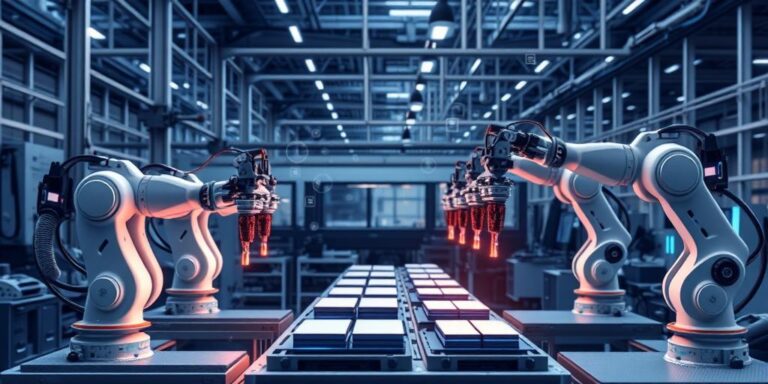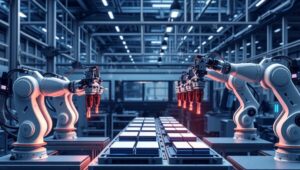Quality Control Automation with IIoT and AI Vision (2026)
The manufacturing landscape is undergoing a massive transformation, driven by the convergence of the Industrial Internet of Things (IIoT) and Artificial Intelligence (AI). One of the most promising applications of this synergy is in quality control automation. As we look ahead to 2026, it’s clear that these technologies will become indispensable for maintaining competitiveness and achieving operational excellence.
The Rise of IIoT in Manufacturing
The IIoT involves connecting machines, sensors, and systems within a manufacturing environment to collect and exchange data. This interconnectedness provides real-time visibility into production processes, enabling manufacturers to monitor performance, identify bottlenecks, and optimize operations. By 2026, the proliferation of IIoT devices will generate unprecedented volumes of data, creating opportunities for advanced analytics and AI-driven insights.
AI Vision: The Next Frontier in Quality Control
AI vision, also known as computer vision, leverages AI algorithms to analyze images and videos, enabling machines to ‘see’ and interpret visual data. In quality control, AI vision systems can inspect products for defects, anomalies, and inconsistencies with greater speed and accuracy than traditional manual methods. These systems can be integrated into existing production lines, providing continuous monitoring and instant feedback.
Key Benefits of Automated Quality Control
- Enhanced Accuracy: AI vision systems can detect even the smallest defects that human inspectors might miss.
- Increased Efficiency: Automated inspection reduces the need for manual labor, speeding up the quality control process.
- Real-Time Monitoring: IIoT connectivity enables continuous monitoring of production lines, allowing for immediate corrective action.
- Cost Savings: By identifying defects early, manufacturers can minimize waste and reduce the cost of rework or recalls.
- Improved Traceability: AI vision systems can track products throughout the manufacturing process, providing a detailed record of quality control checks.
Applications Across Industries
The benefits of AI vision and IIoT in quality control extend across various industries:
- Automotive: Inspecting parts for defects, ensuring proper assembly, and verifying paint quality.
- Electronics: Examining circuit boards, components, and finished products for errors.
- Food and Beverage: Monitoring product quality, detecting contaminants, and verifying packaging integrity.
- Pharmaceuticals: Ensuring correct labeling, detecting foreign particles, and verifying dosage accuracy.
Challenges and Considerations
While the potential of AI vision and IIoT in quality control is immense, there are challenges to consider:
- Data Security: Protecting sensitive data from cyber threats is critical.
- System Integration: Integrating AI vision systems with existing infrastructure can be complex.
- Training Data: AI models require large datasets for training and continuous improvement.
Looking Ahead
As we approach 2026, quality control automation powered by IIoT and AI vision will become a strategic imperative for manufacturers. By embracing these technologies, companies can enhance product quality, improve efficiency, and gain a competitive edge in an increasingly demanding global market. The key lies in understanding the potential, addressing the challenges, and implementing solutions that align with specific industry needs.
Conclusion
The convergence of IIoT and AI vision is revolutionizing quality control in manufacturing. By automating inspection processes, companies can achieve greater accuracy, efficiency, and cost savings. As we move closer to 2026, these technologies will continue to evolve, offering even more sophisticated solutions for ensuring product quality and operational excellence.




